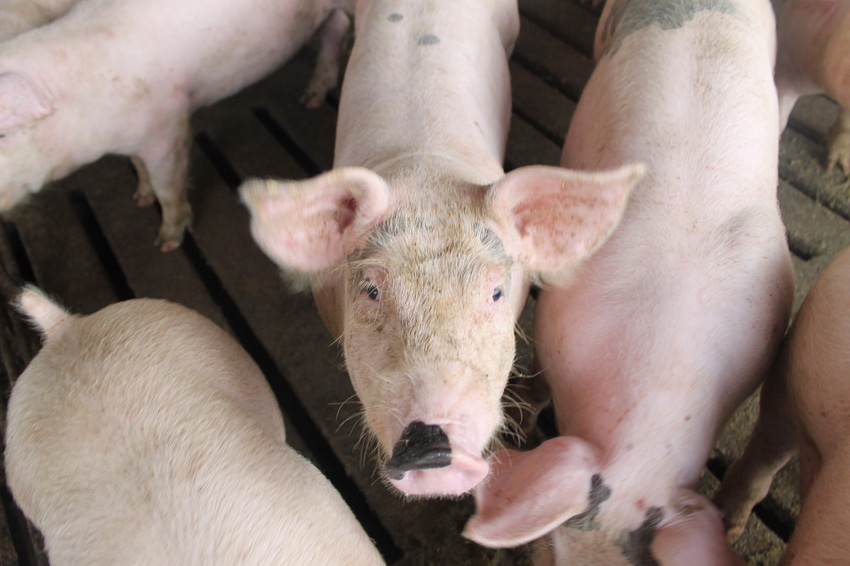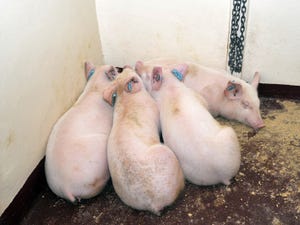Where we stand prior to March ‘Hogs and Pigs’
Several factors at play as industry prepares for USDA's upcoming report.
March 16, 2021

The next installment of USDA’s quarterly “Hogs and Pigs” report will be released next week on March 25, so it is an appropriate time to just do a general review of the hog and pork market and where we stand relative to expectations.
First, hog supplies have been about 3% smaller than USDA’s December 1 market hog inventories would have implied and about 1.4% larger than what I had expected since December 1.
As for year-to-date (YTD) slaughter, be careful about the -3.8% figure being touted by some observers. That number is indeed from USDA’s Estimated Weekly Meat Production Under Federal Inspection (SJ_LS712) report. While that report shows weekly data, the year-to-date computation is based on daily data and there have been two fewer slaughter days this year than there were in 2020. USDA is in no way trying mislead us, but its YTD slaughter does depend on the number of days slaughter plants have operated.
A better measure of the number of hogs available and slaughtered this year versus last year is the sum of weekly slaughter that, by definition, involves the same number of operational days. That figure says slaughter is 0.1% higher this year. An apples-to-apples comparison of pork production using weekly data indicates that production is up 1.5% so far this year.
Second, pork prices and hog prices have been much higher than last year. Now, that is a statement of the obvious, but we have to appreciate the magnitude of the differences. The pork cutout value is up 24.5% year-to-date. National net hog price across all purchase methods is up 20% year-to-date. Iowa-Minnesota Negotiated Base price is up 31% year-to-date.
Higher production and higher prices always means higher demand. A production increase of 1.5% and 20-30% higher prices means higher demand on steroids!
This brings us to the third point—incredible demand. Make no mistake, this is a demand-driven market and has been one of the most positive demand scenarios I can recall for the wholesale and farm-level markets. Domestic consumer-level demand was up nearly 5% year over year in January, but export demand was softer with the quantity exported down 11% and the value of pork exports down 15%.
Pork variety meat export demand, which contributes to hog demand, appears stronger with the January quantity growing 3.7% year over year while the value grew by 16.6%. Data for February will not be complete until February exports are published the first week of April.
A key question is whether domestic consumer-level demand can remain strong enough to support the outstanding levels of demand at the wholesale and farm levels. It is not impossible as farm-wholesale and, especially, wholesale-retail margins can be compressed, at least for the short run. But much higher pork costs must eventually be passed along to consumers if they are to last and to keep supporting farm-level prices. Will the quantity demanded remain strong if those prices rise?
The fourth point poses the question: What happens to demand as vaccinations continue and, hopefully, herd immunity to COVID-19 is realized? On its face, the conclusion would be that demand will increase even further, and that is possible. There is still a substantial portion of our foodservice sector operating at reduced capacity, reduced hours, etc. Full availability of restaurant service would logically lead to higher demand. But is that automatic? I don’t think so.
Remember that last year we shut down a substantial portion of foodservice demand and total pork demand increased almost 4% for the year. How can that be? I don’t think anyone fully appreciated the fact that those meals would still be eaten. Sales of pork through retail stores more than made up for the reduction of foodservice sales. In fact, a dollar spent at a grocery store definitely bought more pork than did a dollar spent at foodservice, supporting pork disappearance and keeping retail prices strong. Instead of buying two slices of bacon on a sandwich, consumers bought a whole pound of bacon and, given the amazing taste of bacon, may have eaten it in one meal. Government support payments provided many of those consumer dollars even though the economy itself softened.
What will happen this year? The good news is that one round of additional government support money is on its way to consumers. That will likely be positive for demand for everything, pork included. Re-opening restaurants will provide some renewed opportunities to buy pork but will that “dollar spent at retail buys more pork than a dollar spent at foodservice” bite us in this reversal? It is likely, to some degree.
The caveat is that 2020 taught a lot of people how to cook at home and some of them actually liked it and may continue to do it. So, I don’t see a complete reversal of last year’s demand growth, but I’d be surprised if it held up completely.
For another discussion of YTD slaughter and demand, take a look at the March 16 edition of Daily Livestock Report.
We still expect seasonally lower slaughter this summer with some weeks near 2.3 million head. We do not foresee packing capacity problems in the fall with peak weeks in the mid-2.7 million area. All of that could change, of course, with next week’s “Hogs and Pigs” report, but we would be surprised to see it change dramatically.
The one factor with an unknown impact is disease-related losses this winter. The “talk” is that losses have been massive, and the blindly bullish have locked on that to justify summer futures prices.
We have two sources of objective data, but it is incomplete if market analysis is your goal. And I should point out that neither of these sources list market analysis as an objective.
The weekly University of Minnesota Dr. Bob Morrison Swine Health Monitoring Project has a sample of 3 million sows on roughly 1,000 sow farms but only reports the incidence (ie the number/percentage of farms) that break with PRRS. There are no data on severity. Iowa State University publishes a monthly report on veterinary diagnostic lab submissions at Iowa State, Minnesota, South Dakota State and Kansas State. Those data do break out information on adult sows and wean-to-market hogs but, again, do not include any direct info on the number of pigs lost.
We have more info than we once had, but we are still substantially in the dark on PRRS losses. If survey responses are accurate and USDA’s procedures are good, we should get an indication of disease-related death losses in next week’s report. They would appear, in my opinion, as significant reductions in the Dec-Feb pig crop and under 50-pound inventory. We’ll see.
My judgement at present is that PRRS cases in sow farms have been relative normal, that there have been more PRRS cases in grow-finish and that death losses have been higher than in the past. That would say that PRRS should have a negative impact on summer hog numbers. Based on history, though, I expect that those reductions may be very difficult to see. There will likely be a small reduction in slaughter hog numbers from May through September, but it may be spread out enough that no “hole” will be apparent.
About the Author(s)
You May Also Like





